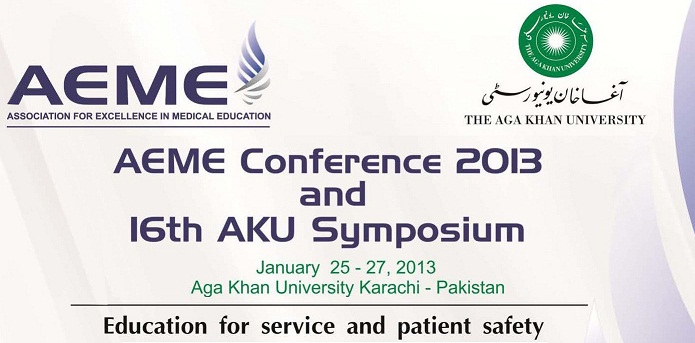Pre-Symposium Workshops
Integrating patient safety and medical errors in undergraduate and postgraduate curricula
Location
Executive Dining Halls 1 & 2
Start Date
25-1-2013 9:30 AM
Abstract
Overview
In 1999, the Institute of Medicine (IOM) report estimated as many as 98,000 patients die every year from preventable medical errors in U.S. hospitals. Medical errors are defined as the failure of a planned action, or the use of the wrong plan, to achieve an aim. To ensure patient safety, health care providers and systems must be prepared to recognize potential sources of error, to acknowledge vulnerability to error, and to fully engage in the process of continuous quality improvement. Most providers agree that medical errors should be disclosed to patients; however, research demonstrates that disclosure of errors is uncommon, with roughly only 1 in 4 errors being disclosed. Many providers continue to remain silent secondary to the fear of litigation, fear of stating explicitly to a patient that an error occurred, and the desire to put a positive spin on a situation. Addressing quality and safety issues in health care is difficult because the culture of secrecy and silence reduces awareness by future generations of providers.
This workshop will explore in depth error science, and elaborate issues related to reporting, investigation, Root Cause Analysis, and quality improvement. It will also focus on communication—whether verbal, nonverbal, written, and via technology (phone messages, e-mails)—which is a core component of both medical error and quality improvement. During the workshop the participants will look more closely at how each of these elements plays a role in the evolving story of a medical error. The workshop will be very interactive; participants will watch videos, identify sources of error, and discuss ways of disclosing errors. Finally, incorporating a patient safety curriculum in participants' own settings will be discussed.
Integrating patient safety and medical errors in undergraduate and postgraduate curricula
Executive Dining Halls 1 & 2
Overview
In 1999, the Institute of Medicine (IOM) report estimated as many as 98,000 patients die every year from preventable medical errors in U.S. hospitals. Medical errors are defined as the failure of a planned action, or the use of the wrong plan, to achieve an aim. To ensure patient safety, health care providers and systems must be prepared to recognize potential sources of error, to acknowledge vulnerability to error, and to fully engage in the process of continuous quality improvement. Most providers agree that medical errors should be disclosed to patients; however, research demonstrates that disclosure of errors is uncommon, with roughly only 1 in 4 errors being disclosed. Many providers continue to remain silent secondary to the fear of litigation, fear of stating explicitly to a patient that an error occurred, and the desire to put a positive spin on a situation. Addressing quality and safety issues in health care is difficult because the culture of secrecy and silence reduces awareness by future generations of providers.
This workshop will explore in depth error science, and elaborate issues related to reporting, investigation, Root Cause Analysis, and quality improvement. It will also focus on communication—whether verbal, nonverbal, written, and via technology (phone messages, e-mails)—which is a core component of both medical error and quality improvement. During the workshop the participants will look more closely at how each of these elements plays a role in the evolving story of a medical error. The workshop will be very interactive; participants will watch videos, identify sources of error, and discuss ways of disclosing errors. Finally, incorporating a patient safety curriculum in participants' own settings will be discussed.

